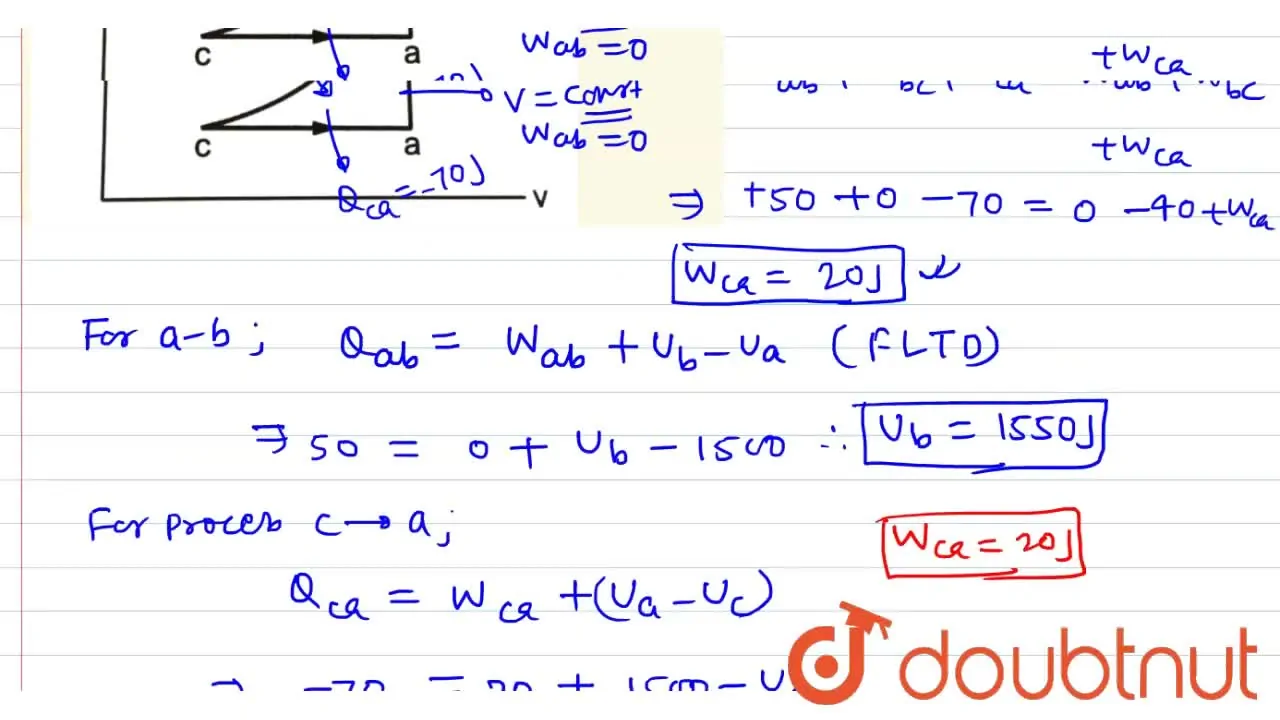A sample of an ideal gas is taken through a cycle as shown in figure. If absorbs 50 J of energy during the process AB, no heat during BC, rejects 70 J during CA. 40 J of work is done on the gas during BC. Internal energy of gas at A is 1500 J, the internal energy at C would be
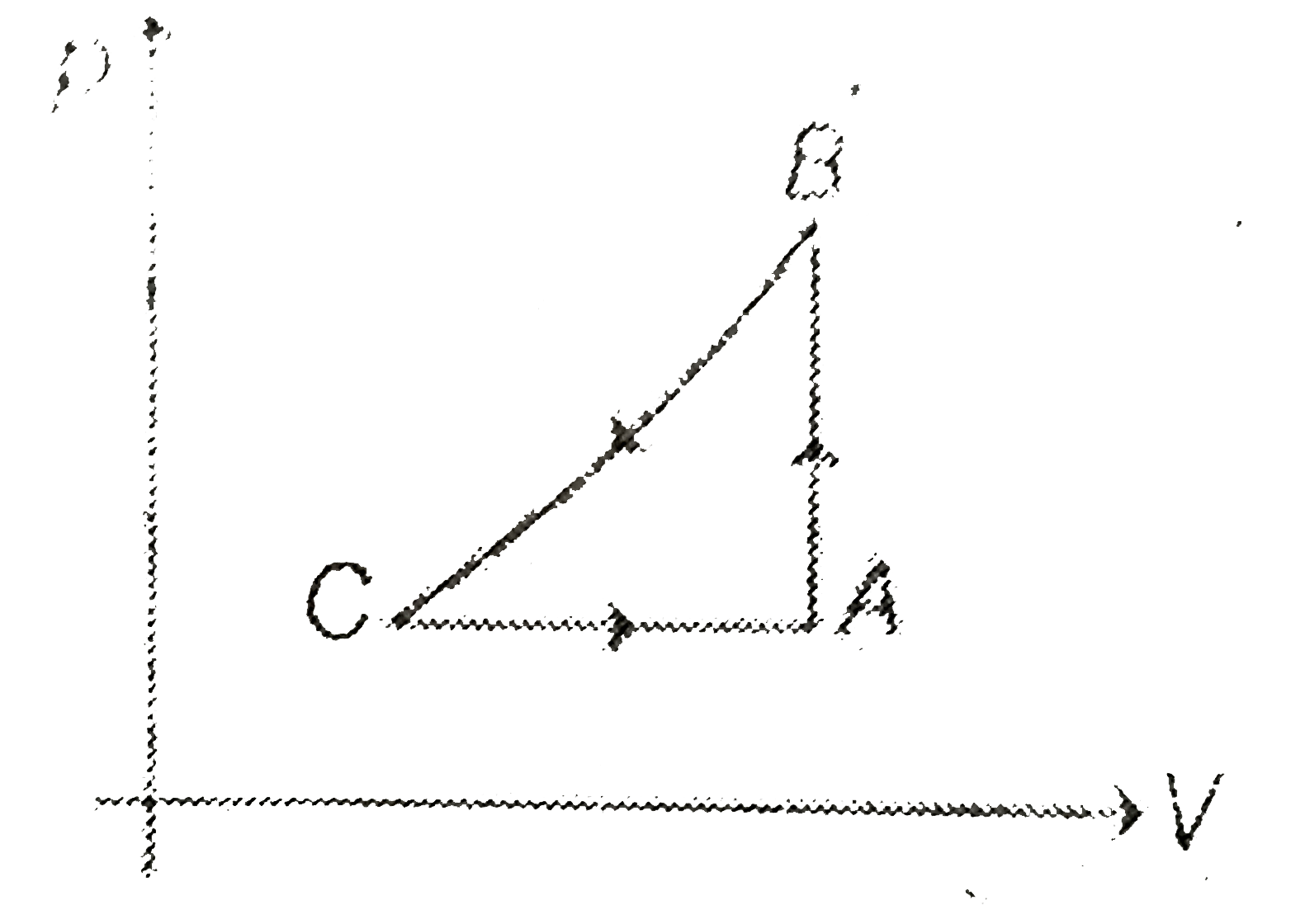
a. In the part ab the volume remains constant. Thus, the work done by the gas is zero. The heat absorbed by the gas is 50J The increase in internal energy from a to b is
ΔU=ΔQ=50J
As the internal energy is 1500J at a, it will be 1500J at b. In the part bc, the work done by the gas is ΔW=−40J and no heat is given to the system. The increase in internal energy from b to c is ΔU−ΔW=40J
As the internal energy is 1550J at b, it will be 1590J at c.
b. The change in internal energy from c to a is
ΔU=1500J−1590J=−90J
The heat given to the system is ΔQ=−70J.
Using ΔQ=ΔU+ΔW,
ΔWca=ΔQ−ΔU=−70J+90J=20J
Related Playlists
- BOOK - CENGAGE PHYSICS ENGLISHCHAPTER - KINETIC THEORY OF GASES AND FIRST LAW OF THERMODYNAMICSEXERCISE - Subjective22videos
KINETIC THEORY OF GASES AND FIRST LAW OF THERMODYNAMICS
- BOOK - CENGAGE PHYSICS ENGLISHCHAPTER - KINETIC THEORY OF GASES AND FIRST LAW OF THERMODYNAMICSEXERCISE - Single Correct140videos
KINETIC THEORY OF GASES AND FIRST LAW OF THERMODYNAMICS
- BOOK - CENGAGE PHYSICS ENGLISHCHAPTER - KINETIC THEORY OF GASES AND FIRST LAW OF THERMODYNAMICSEXERCISE - Exercise 2.120videos
KINETIC THEORY OF GASES AND FIRST LAW OF THERMODYNAMICS
- BOOK - CENGAGE PHYSICS ENGLISHCHAPTER - KINETIC THEORY OF GASESEXERCISE - Compression2videos
KINETIC THEORY OF GASES
- BOOK - CENGAGE PHYSICS ENGLISHCHAPTER - LINEAR AND ANGULAR SIMPLE HARMONIC MOTIONEXERCISE - Single correct anwer type14videos
LINEAR AND ANGULAR SIMPLE HARMONIC MOTION
Similar Questions
A sample of an ideal gas is taken through the cyclic process abca . It absorbs 50J of heat during the part ab, no heat during bc and rejects 70J of heat during ca. 40J of work is done on the gas during the part bc.
(a) Find the internal energy of the gas at b and c if it is 1500J at a.
(b) Calculate the work done by the gas during the part ca.
 View Solution
View SolutionA sample of an ideal gas is taken through the cyclic process abca . It absorbs 50 J of heat during the part ab, no heat during bc and rejects 70 J of heat during ca. 40 J of work is done on the gas during the part bc.(a) find the internal energy of the gas at b and c if it is 1500 J at a. (b) calculate the work done by the gas during the part ca.
 View Solution
View SolutionA sample of an ideal monoatomic gas is taken round the cycle ABCA as shown in the figure the work done during the cycle is
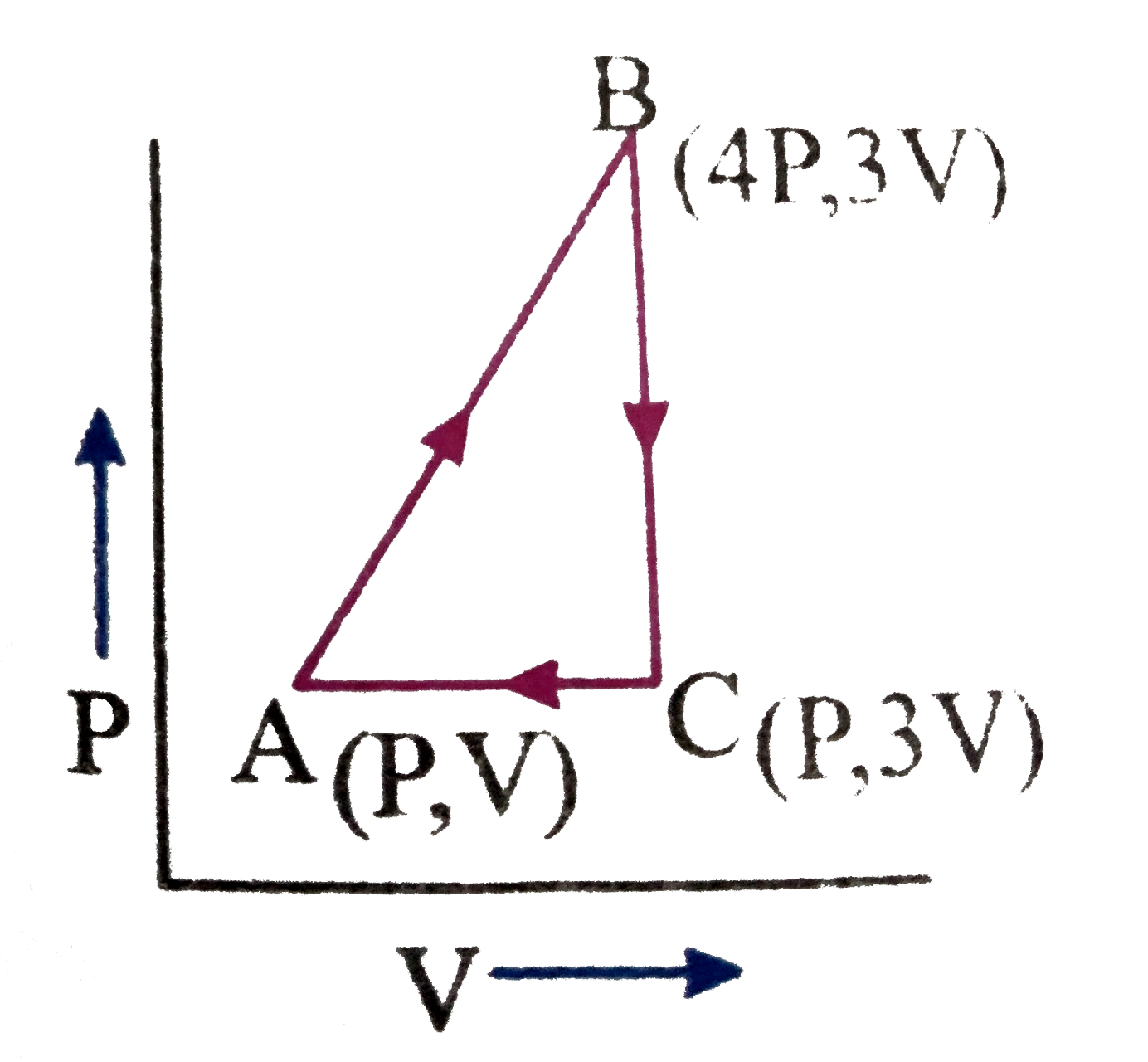 View Solution
View SolutionA sample of an ideal gas is taken through the cyclic-process ABCA shown in Fig. It rejects 50J of heat during the part AB, doens not absorb or reject the heat during BC, and accepts 70J of heat during CA. Forty joules of works is done on the gas during the part BC. The internla energies at B and C, respectively, will be (Internal Energy at A=1500Joules)
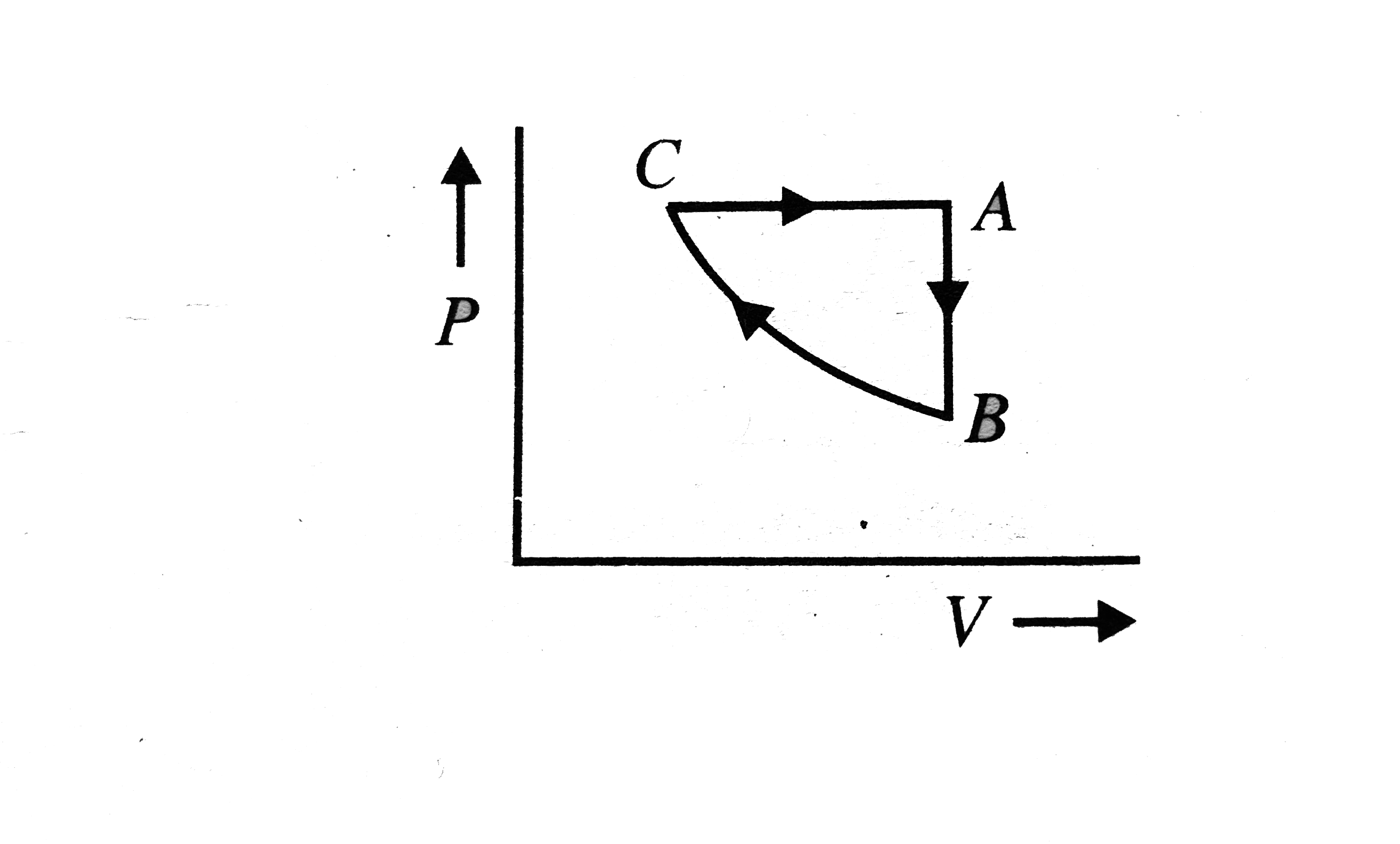 View Solution
View SolutionA sample of an ideal gas is taken through the cyclic-process ABCA shown in Fig. It rejects 50J of heat during the part AB, doens not absorb or reject the heat during BC, and accepts 70J of heat during CA. Forty joules of works is done on the gas during the part BC. The internla energies at B and C, respectively, will be
 View Solution
View SolutionA thermodynamic system is taken through the cycle ABCD as shown in the figure. Heat rejected by the gas during the cycle is
 View Solution
View SolutionAn ideal gas is taken around the cycle ABCA as shown in the P-V diagram. The total work done by the gas during the cycle is
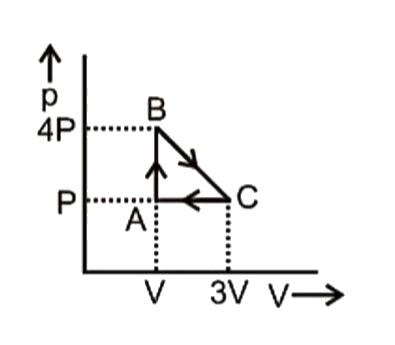 View Solution
View SolutionIn figure, a sample of an ideal gas is taken through the cyclic process abca. 800J of work is done by the gas during process ab. If gas absorb no heat in process ab, rejects 100J of heat during bc and absord 500J of heat during process ca. Then (a) find the internal energy of the gas at b and c if its is 1000J at a (b). Also calculate the work by the gas during the part bc,
 View Solution
View SolutionAn ideal gas is taken through the cycle A→B→C→A, as shown in figure. If the net heat supplied to the gas in the cycle is 5 J the work done by the gas in the process A→B is
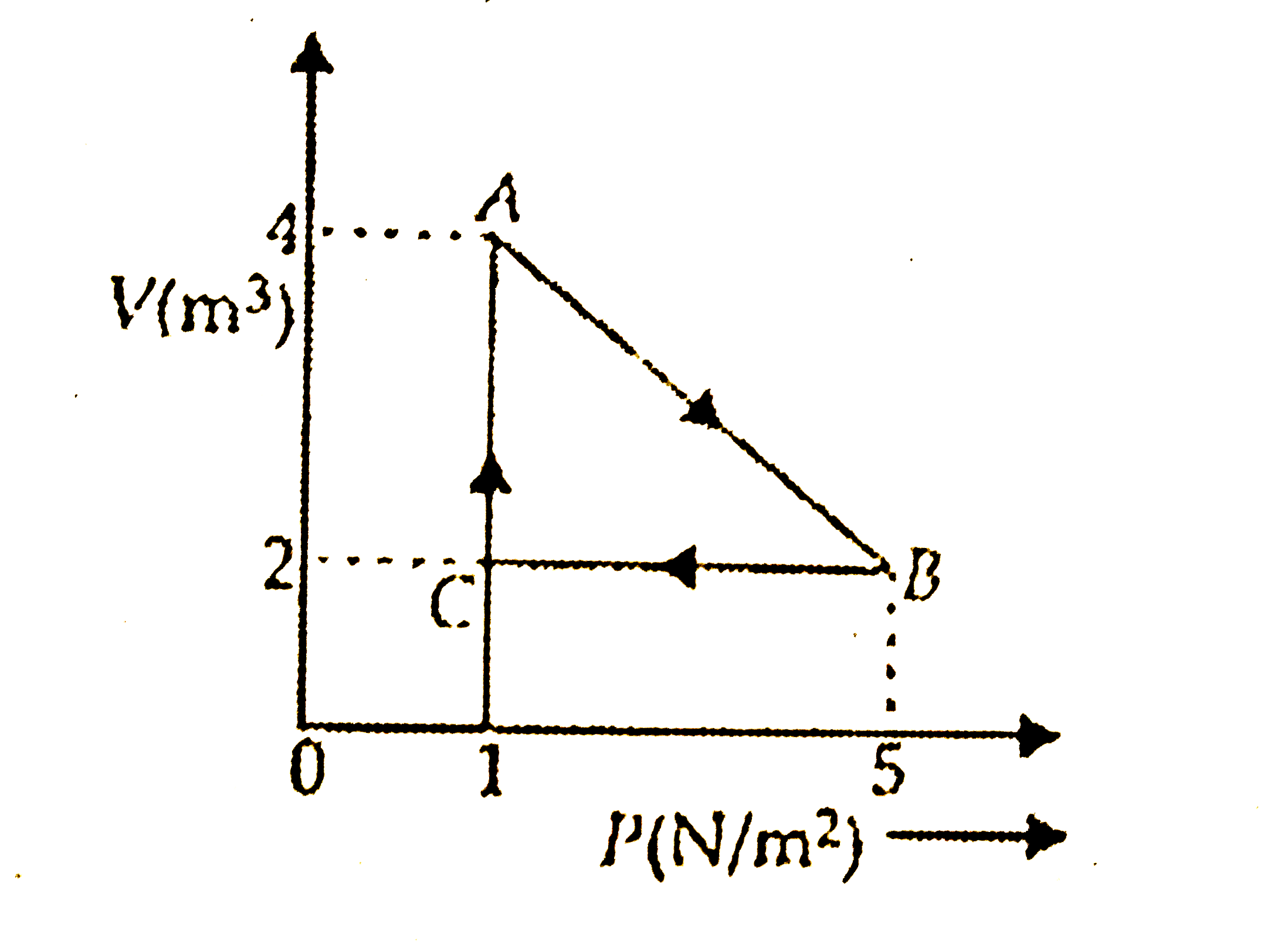 View Solution
View SolutionAn ideal gas is taken through the cycle A→B→C→A, as shown in the figure, If the net heat supplied to the gas in the cycle is 5J, the work done by the gas in the process CtoA is
 View Solution
View Solution

